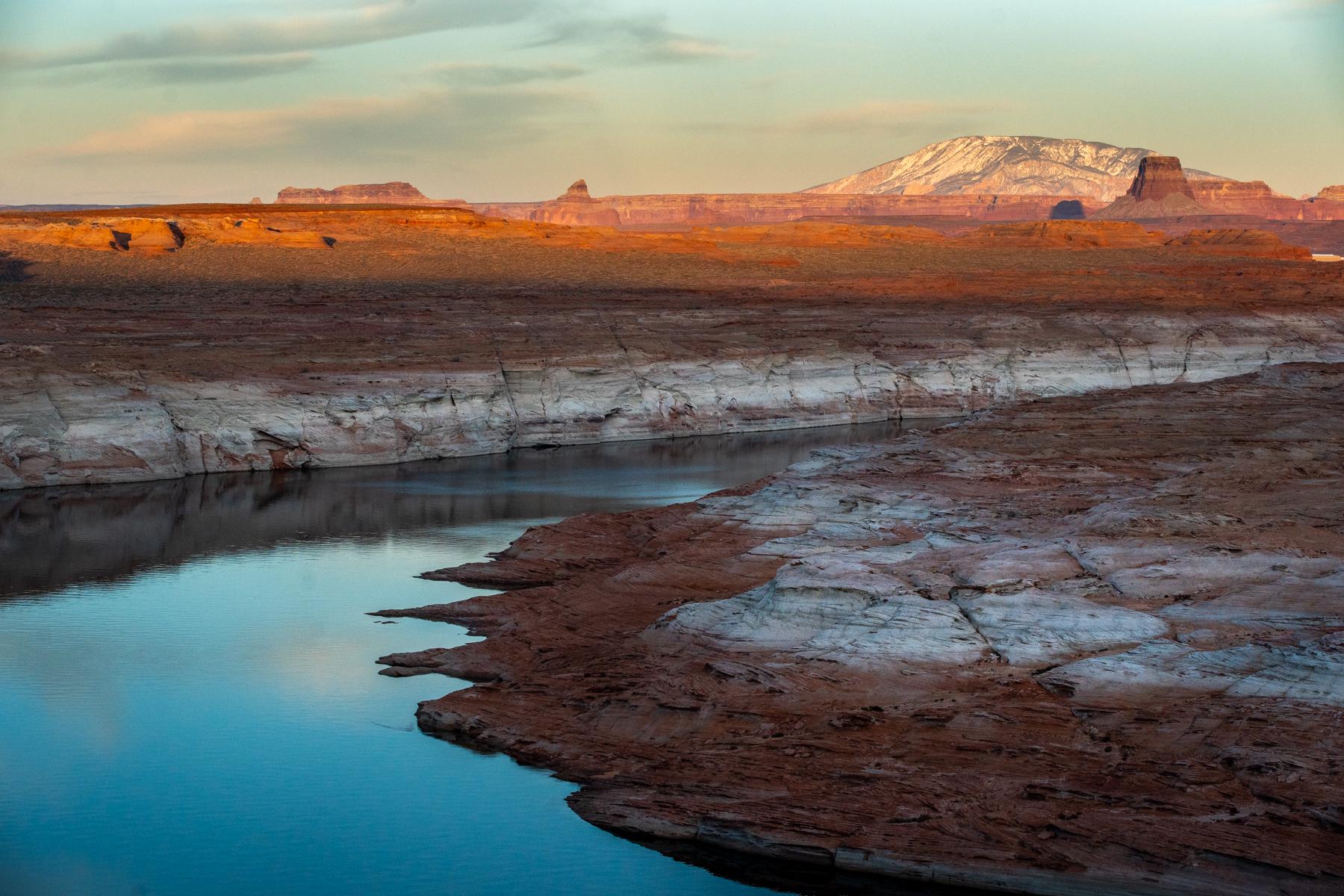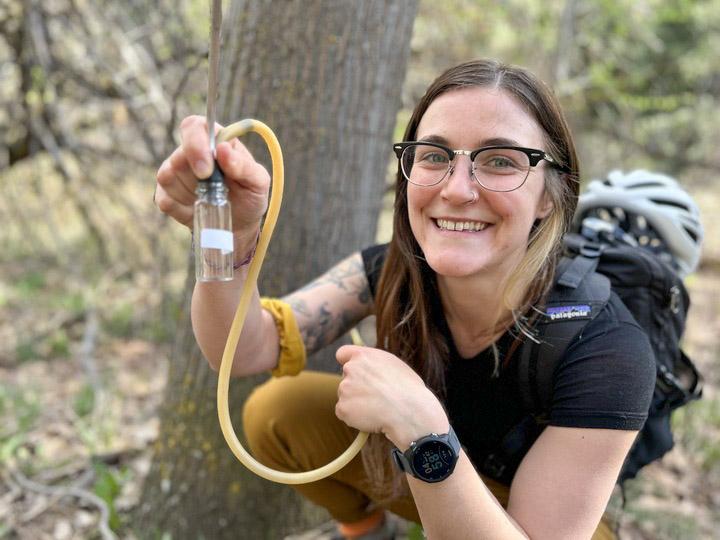
The states that share the Colorado River need to negotiate new rules to better manage the dwindling river so it can continue to meet the needs of millions of people across the Southwest. That means finding ways to keep more water in the river and reservoirs, which means less water to go around.
The high-stakes, multi-year negotiation process between the states — Colorado, Utah, Wyoming and New Mexico in the upper basin and Arizona, Nevada and California in the lower basin — along with the U.S. Bureau of Reclamation, officially kicked off in June.
By the start of 2027, the states and the federal government are expected to have a new agreement on rules to manage the river so that Lake Mead and Lake Powell, the country’s largest reservoirs, don’t hit critically low levels. Climate change and overuse have stressed the river system and helped drive both reservoirs to drop to record-low water levels.
There are 30 Indigenous tribes that also rely on the river, which provides water, irrigation and power for 40 million people across the Southwest. Some seek new legal structures that ensure tribal nations have a say in the negotiation process — the results of which could determine how the river and its reservoirs are managed for the next several decades.
To help start the process, the U.S. Bureau of Reclamation collected public comments on issues, ideas and strategies to consider. Colorado water officials submitted their own letter, which outlines the state’s interests and needs going into negotiations. Here are the highlights:
What Colorado wants
Colorado needs the Colorado River
Colorado’s letter makes it clear that the Colorado River and its tributaries supply over 40 percent of Colorado’s water needs. Unlike Nevada, Arizona and California, many Colorado water users don’t pull their water supplies out of reservoirs that provide a “steady, reliable source of supply” like Lake Mead does. Instead, Colorado’s water supplies are dependent on the climate, snowmelt and short-term runoff trends.
Colorado doesn’t use its full share of water
In 1922 the states signed a compact that divides up how water in the Colorado River is shared. States upstream of Lake Powell are supposed to get half of what once flowed through the river, with the other half flowing to downstream states.
But the upstream states, including Colorado, don’t use their full share of the Colorado River, while the downstream states often do. Colorado’s letter also explains that senior water rights holders in Colorado often have to take water cuts because of the ongoing drought, “which significantly impacts Colorado’s farms, ranches, cities and towns, the recreation industry, and the environment.” That means water users in the state often have to use less than what they have the right to use because they are limited by that year’s hydrology, state water officials argue in their letter.
Colorado thinks the current river rules aren’t working
The letter from Colorado water officials says the current rules in place to keep Lake Powell and Lake Mead from drying up aren’t sustainable. In 2000, the reservoirs were nearly full. By March 2023, they were less than 32 percent of capacity. “The need for repeated interventions as the system bordered on collapse demonstrates the ineffectiveness,” officials write in the letter.
Colorado says long-term projections aren’t cutting it
The federal government uses projections to estimate how much water will be in Lake Powell and Lake Mead to help them decide whether to limit water releases to states. In Colorado’s letter, water officials say that should change. They want the federal government to base water cuts on actual hydrologic conditions “rather than data from projections several months or years into the future.” The letter argues that would help water users and managers to know how much water is actually available so they can adapt in dry years and reduce water use to preserve levels in the reservoirs.
Colorado has a list of requirements
The letter from Colorado water officials includes an eight-point list of what they think should be included in the new management rules. The list includes an “acknowledgment that climate change is real” so the rules prepare for a drier future, a mandate that new rules will need participation from the Colorado River Basin tribes and a requirement that the new rules don’t favor one part of the river basin over the other.
Colorado thinks California, Arizona and Nevada are using too much water
The Colorado letter wants the new rules to recognize that “Lower Basin overuse is unsustainable and puts the entire system at risk.” This is the stance Colorado, Wyoming, Utah and New Mexico have taken as the federal government has asked for the states to come up with a plan on how to use less water to keep Lake Powell and Lake Mead from crashing. Colorado’s letter also calls for permanent water cuts to these states of 1.2 million acre-feet to 1.5 million acre-feet each year. That’s enough water for around 3 million average households.
Colorado also wants the federal government to explore mandatory water cuts to California, Arizona and Nevada
Colorado water officials call for a “thorough analysis” of the Secretary of the Interior’s authority to divide and allocate water supplies and impose cuts in the lower basin to bolster water levels at Lake Powell and Lake Mead. At the same time, the lower-basin states should consider ways to voluntarily conserve water “in separate but parallel proceedings.”
The lower-basin perspective
The Central Arizona Water Conservation District, the Southern Nevada Water Authority and the Metropolitan Water District of Southern California in the Colorado River’s lower basin submitted a joint letter outlining some of their negotiation priorities, needs and asks. Representatives from the three states also submitted a joint letter. Here are the highlights:
Lower-basin states rely on the Colorado River
In the letter from water users in the three states, officials note that the organizations collectively provide water to 27 million residents — all of it with Colorado River water stored in Lake Mead.
Lower-basin states want the feds to pay them to conserve water
The letter from lower-basin water users asks that the U.S. Department of the Interior find a long-term source of funding to support the conservation efforts that are needed to respond to the drought and climate change. That funding would encourage voluntary measures, according to the letters.
Lower-basin states want to protect the water they’ve conserved
Through efforts like leaving farm fields dry, the states have conserved water that is currently stored in Lake Mead. The lower-basin letters say they have spent years and invested millions of dollars to help keep water in Lake Mead, and the letter signers want that storage to be preserved for their benefit.
Water is public health in the lower basin
Officials in the lower basin want new operation rules to include provisions that would protect water levels at Lake Mead that ensure water can be delivered to downstream users to meet public health, safety and welfare needs.
The lower basin wants a strong tribal voice
While the 30 Indigenous tribes that rely on the Colorado River have historically been left out of decision-making processes, the lower-basin letter says that successful management of the Colorado River will depend on the support and participation of the tribes, many of which are located in the downstream basin.
The lower basin wants improvements to Glen Canyon Dam
In the letter from lower-basin state representatives, they ask that the U.S. Bureau of Reclamation look at ways to improve Glen Canyon Dam, which holds back the water in Lake Powell. There are concerns that if the lake gets too low, the dam itself could struggle to deliver water down through the Grand Canyon and to Lake Mead — the reservoir that Nevada, Arizona and California pull from.
Lower basin: Respect the original 1922 Colorado River Compact
While the states will work on new rules on how to manage the Colorado River, they’re not actually renegotiating the 1922 compact that divided up the river. In the letter from the lower-basin states, they ask that the 1922 compact be the foundation of the new operating guidelines. Respecting the original agreement will help “avoid the uncertain outcomes that result from litigation,” the lower-basin authors write.







